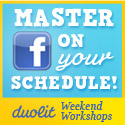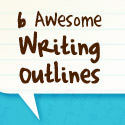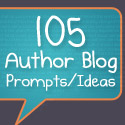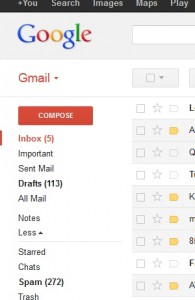 The average person receives 147 emails every day.
The average person receives 147 emails every day.
When I first read that statistic, it seemed like total hooey. Almost 150 messages every day? Maybe fancypants famous people get that many, but definitely not me.
I was debating between feeling relieved or unloved, when suddenly, it hit me: I probably DO receive that much email every day.
Between spam, the latest sales at Hobby Lobby, updates from family and emails from our lovely indie author friends, the amount of mail adds up quickly!
The process of filtering through my emails has become so automatic, however, that I disregard at least half of those emails before even opening them.
I’d be willing to bet that you do the same.
With that in mind, would it surprise you to know that, as an indie author, your mailing list is your biggest asset?
Your Mailing List is Gold, Baby!
It’s true: more than website visitors, more than Twitter followers, more than Facebook likes or Pinterest repins, the amount of folks on your mailing list gives you an instant snapshot of the state of your fanbase.
Are you rolling your eyes? Maybe the thought of sending obnoxious email newsletters feels sleazy, or perhaps you’ve tried it before but haven’t had good results.
Bear with me. Forget everything you think you know about mailing lists and email updates, and let’s explore the easy, fun and *effective* side of email marketing.
1. Set Up Your List
Before we can create those awesome email updates, you have to have a mailing list, right? So, sign up for Mailchimp. The basic features are free and suit the needs of indie fiction authors nicely.
If you have a self-hosted website or WordPress blog, learn how to add a signup form to your site. If you’re on WordPress.com, it’s a little hackier, but can be done.
2. Encourage Fans to Join Your List
Now that we have a list, it’s time to add your readers! While this could be a whole post in and of itself (and probably will be eventually), the major actions that encourage readers to join your list are:
1. Giving something away (that your readers actually want).
When readers join your list, send them some sort of freebie as a “thank you.”
This could be a short story, excerpt, alternate POV piece — whatever. But make it short and awesome; something a reader could finish in a few hours or less. Think of this as your “audition piece.” If they like what they read, they’ll stick with you!
2. Creating an awesome, convincing signup page, then linking to it instead of your website’s homepage.
If this goes against your natural leaning, I understand, but here’s the deal: over half of the people who visit websites only view one page (that’s a stat from this site, but the pattern is similar across the web).
You know how it is: our attention spans are super-divided nowadays. Linking to your signup page directly:
- Offers the visitor a peek into who you are and what you write.
- Gives them a reason to entrust you with their email address (remember that freebie?).
- Puts them on the road to becoming a fan.
The Checklist for Writing Fun, Effective Email Updates
Now that you have a list in place, it’s time to start interacting with those fans! Woot!
Timing
How often you send out your email updates is up to you, but my advice is this: send them as often as possible without sacrificing quality and value. I suggest weekly (gasp! I know!).
Don’t get overwhelmed. You don’t need to create exclusive content for every update. While that’s nice now and then, the format I’m about to share is tailor-made to point to content already on your website.
No matter what you decide, be consistent. Unless you’re getting close to launch time (when things get crazy), choose an update schedule and stick to it — this way, your fans used to seeing you in their inbox.
Look and Feel
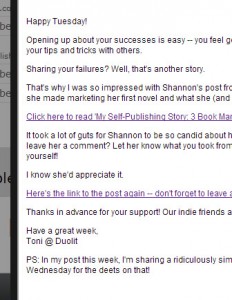 When you create your email, your eyes will be bombarded with dozens of pretty themes to choose from.
When you create your email, your eyes will be bombarded with dozens of pretty themes to choose from.
Wanna hear a secret? I hate them all.
Seriously, I used to be all about email newsletters with those fancy colors and images, but no more!
Use the most bare-bones formatting you can find (here’s a stripped down template I made for Mailchimp and how to import it).
With this basic template in place, you can format your emails so they look like a regular email to a friend. Because, in a way, that’s exactly what you’re writing!
Subject Line
After you’ve selected your template, decide on a subject line. Think of this is a headline for your email — it’s that important.
To do this, first choose the point of your email. You’re not just sending out random updates, but using your emails to build relationships and encourage your fans to take some sort of action, such as:
- Reading/commenting on a blog post
- Leaving a review
- Purchasing your book
- Answering a question
- Sharing an opinion
Choose one purpose for your email, a single action you want readers to take. This gives your email focus; the last thing you want is confusion!
After you decide on your action, compose a subject line that grabs your reader’s attention. You can use common headline-writing tactics, but be sure to throw in your own flair!
Caution! Whatever you do, don’t make your subject line “May 2012 Newsletter” or “Newsletter #5” or “Author Namehere’s Newsletter.” There’s nothing fun-sounding or attention-grabbing about those!
Your Email’s Opening Line
Now we can move on to the email itself! First thing’s first: the opening line.
Most email providers (like Gmail) show the first sentence of an email in the inbox itself, so it’s important to sound personal and non-spammy. Some options:
- If users share their name when they sign up for your mailing list, use that information here, like “Hi Toni!”
- Use a typical opening you’d use in an email to a friend. We’re fans of “Hey there!” and “Happy [Day of Week]!” This is totally dependent, however, on your personality (and what your readers are familiar/comfortable with)!
The Body of Your Email
Write the body of your email like you’re writing to one person. While you’re writing, picture a single reader in your mind and write the email directly to him:
- Write like you speak, NOT like you’re writing your novel. It’s okay — no one will be grading your grammar!
- Use short paragraphs to break up your email. Long walls of text overwhelm readers!
- Want a few bonus points? Read your email out loud!
Inserting Your Call to Action
Remember that single purpose we decided on before you started writing your email? Now it’s time to add it in!
- Add your call to action in at least two spots. Since most readers skim emails, it’s important to repeat yourself.
- Craft the link or action in a conversational way, like it’s a natural part of the email. Use “Click here to check out my short story” not simply “click here”
Add Your Closing
Like your opening, your closing line is up to your personal taste, but consider this excellent post on the “familiarity index” of different email closings.
PS: Don’t Forget the Post Script
Those fun asides commonly found at the end of letters and emails are actually the second most read part of your message!
While including a PS in every email could dilute its effectiveness, it is an excellent spot to restate your call to action or leave a closing thought.
Author Email Example
While it may seem like a lot to remember, seeing the concepts above in action makes the crafting engaging emails easy as pie. Here’s a sample I whipped up:
SUBJECT: NEW Halloween-y Short Story Inside (I’m eager to hear your thoughts!)
Hey there!
October is already here — are you breaking out the fall decorations? Even though there’s not the slightest hint of a chill in the air here in Florida, I’m already plotting out the design for my front porch Halloween display!
Believe it or not, Halloween is my favorite holiday. Everyone assumes that it’s Christmas (perhaps because of my awesome Christmas village), but Halloween is first on my list. Something about it signals the beginning of an exciting holiday season, and I’ve always been drawn to that.
Plus, you know, all the candy. I can’t lie, I’m a sucker for the candy (pardon the pun).
Anyways, I was struck by a bit of inspiration over the weekend, and whipped up a short story about new beginnings, old candy and the costumes we wear year-round. I’d love for you to check it out:
Click here to read ‘Did They Make All The Candy Corn in 1976?’It’s a bit of a departure from my normal fare, so I’m interested to hear what you think. After you’ve read the story, would you leave a short comment and share your thoughts (be honest!)?
I’ve been stressing over whether I should flesh it out, and your feedback will help a ton
Click here to read the short story and leave a comment!Thank you for taking the time to check it out and I can’t wait to hear your thoughts!
Happy October,
Toni ImnotanauthorPS: Did I mention that the story involves a costume made completely out of candy corn? You know you can’t resist finding out more about that!
That’s all completely made up, of course, but it gives you an example of the principles I discussed above. The best part? It took me less than 10 minutes to write!
The Number One Rule of Emailing Your Fans
The biggest rule of mailing list etiquette is this: write emails that you would like to read. If it sounds boring to you, your readers will likely skip it: make those emails entertaining and action-oriented!
No matter how awesome your emails are, however, some folks WILL complain or unsubscribe — that’s okay. Don’t take it personally. Your real fans will stick with you!
Download the Super-Duper Author Email Checklist!
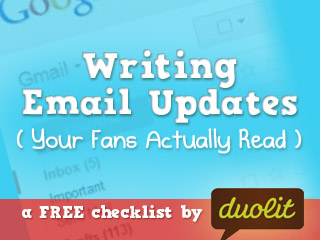 Even if you’re skeptical, give this style of email updates a try. It’s fun, fast and helps you build personal relationships with your fans. I’m so passionate about this stuff that I created a handy checklist to keep you on track!
Even if you’re skeptical, give this style of email updates a try. It’s fun, fast and helps you build personal relationships with your fans. I’m so passionate about this stuff that I created a handy checklist to keep you on track!
Soon, you’ll be an emailing pro, interacting with your fans one-on-one — no sleazy feeling involved!
Talk Back
I’m curious: do you have a mailing list? Has it helped your indie career? Did the tips above give you any ideas or make it seem more do-able to you? Do you have other tricks to share? Let’s discuss in the comments!

 We're
We're 



